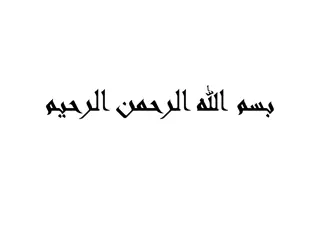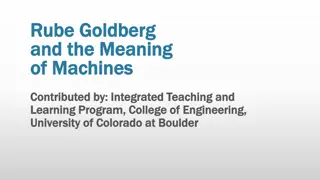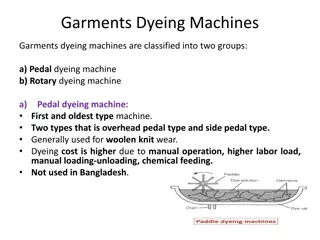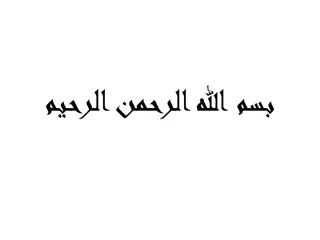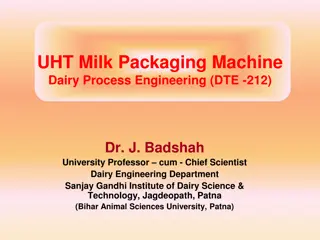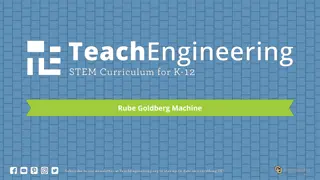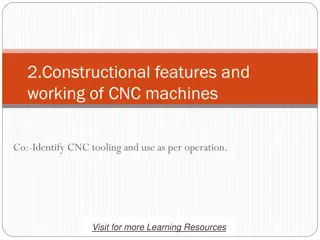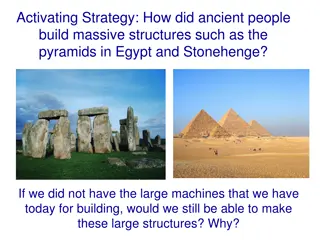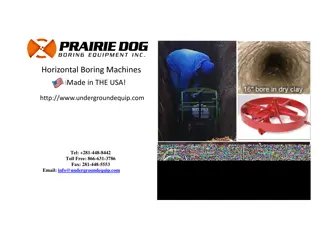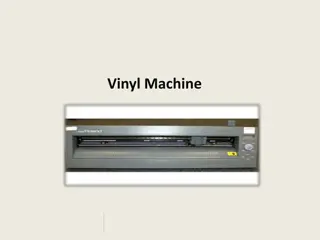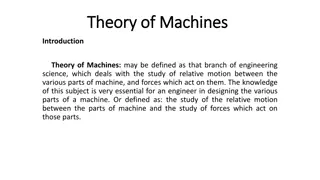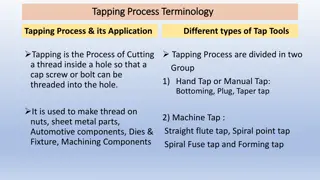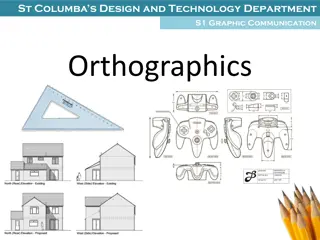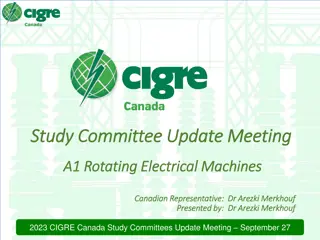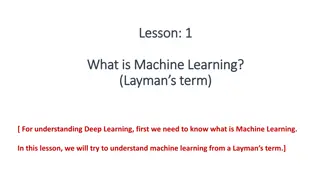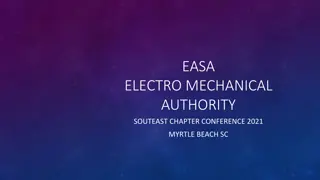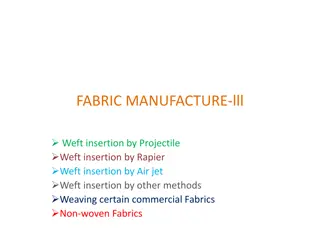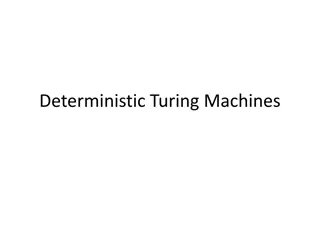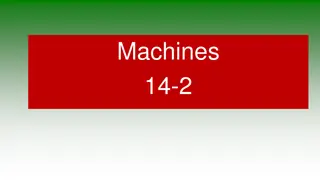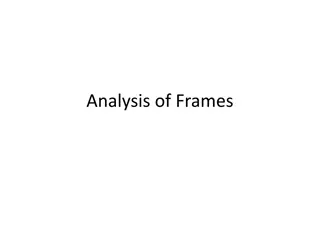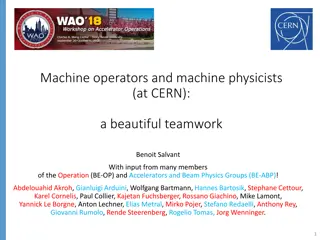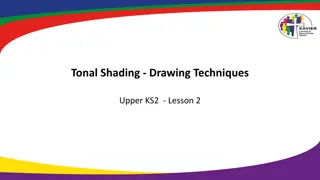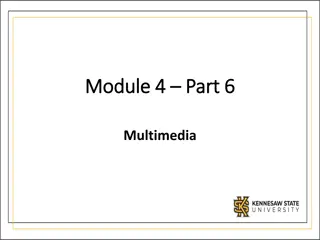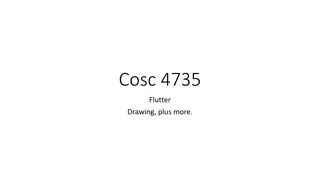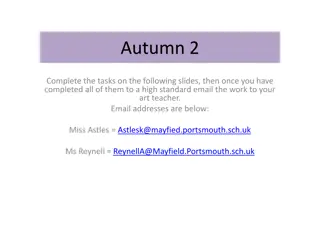Understanding Machine Drawing for DC Machines
This content provides detailed insights into machine drawing for DC machines, including end elevation views, sectional views, scales, dimensions, and components such as poles, yokes, bolts, and more. Learn about important aspects like calculating air gaps and the significance of dimensions in assembly drawings.
Download Presentation

Please find below an Image/Link to download the presentation.
The content on the website is provided AS IS for your information and personal use only. It may not be sold, licensed, or shared on other websites without obtaining consent from the author. Download presentation by click this link. If you encounter any issues during the download, it is possible that the publisher has removed the file from their server.
E N D
Presentation Transcript
Machine Drawing DC Machine
View End elevation, longitudinal elevation, end sectional view: End view Front elevation, side elevation: Side view
Sections Half sectional view: Only one half, preferably top half in detail Quarter sectional view: One-fourth of the machine in detail, rest covered This is a half sectional end view. Top half in detail, bottom half covered by the machine cover, so the inner parts are hidden
Scale Scale: 1:2 - Half scale The given dimensions are reduced by 2. A diameter of 24 cm becomes 12 cm while drawing Scale: 1:4 - Quarter scale The given dimensions are reduced by 4. A diameter of 24 cm becomes 6 cm while drawing Scale: 1:1 - No change in the dimensions. The given values are used as given Scale: 3:1 - The values given are trebled while drawing. Given dimension of 5 mm becomes 15 mm while drawing Note: The given dimensions must be mentioned in the drawing for any scale, and not the scaled values Actual size Scale-1:2
Dimensions Dimensions are very important in machine assembly drawings Radius mentioned as R20 Diameter as 40 Here 33.46 is arc length 45 is the angle in degrees 48 and 8 are linear dimensions (for horizontal or vertical lines) 13.94 and 5 are aligned dimensions (for tilted lines) Note: The numbers must be aligned in the same direction as the arrows
DC machine pole A DC machine has a pole which is fixed to the yoke by bolts. The pole has a rectangular pole body and a curved pole shoe. Shoe ensures that the air gap is uniform by being parallel to the armature cylinder Yoke Bolt Screws Pole body Pole shoe
DC machine pole Yoke height: 9.5 Pole width: 14 Pole height: 16 Shoe height: 3 Note: All heights, like pole body, pole shoe, yoke height are measured along the central axis Bolt width: 1.5 Bolt height will not be mentioned. Bolt lengths will be approximately till the centre of the pole body Pole body: The rectangular part of the pole Pole shoe: The curved and extended potion of the pole
Calculating air gap Given: Pole arc diameter: 56 cm. Therefore, pole arc radius is 56/2=28 cm Armature diameter: 54 cm. Therefore, armature radius is 54/2=27 cm Air gap=pole arc radius-armature radius=28-27=1 cm
Measuring arc length Given: Pole arc length is 20 cm Pole arc radius is 28 cm A curved line like an arc cannot be measured directly using a scale. So the angle it subtends at its centre has to be calculated, to find the ends of the arc
Measuring arc length An arc of length 20 cm with radius 28 cm is required. A curved line like an arc cannot be measured directly using a scale. So the angle it subtends at its centre has to be calculated, to find the ends of the arc Draw two line from centre with angle of 40.9o The two points touching the arc mark the ends of the arc, with length 20 cm
Pole shoe values Pole shoe height is measured along the central axis. The extension values of the pole shoe will usually not be given, marked by x here. The x values have to be assumed
DC Pole side view Side view is also called side elevation, front elevation Draw a central axis. Through all lines crossing the central axis, draw horizontal lines Draw rectangles with the length of the pole given Draw extra parts like end plate, screws etc. In end view, a single bolt can be seen. In side view, the bolts behind the front bolt are also seen
DC Machine Poles A DC machine has poles fixed to the stator. The poles have windings to electro-magnetise them. There are two types of poles - main pole - interpole
DC Machine Poles Main pole is bigger, wider and has a pole shoe to make the air gap uniform Interpole is placed between two main poles to compensate for the gap between them Interpoles are thinner, so do not require pole shoe Note the difference in pole windings and the bolts for both types of poles
DC Machine This is a DC machine with 4 poles. 4 poles means there are 4 main poles and 4 interpoles The circle has to be divided into 8 sectors with angle 360/8=45o between them



